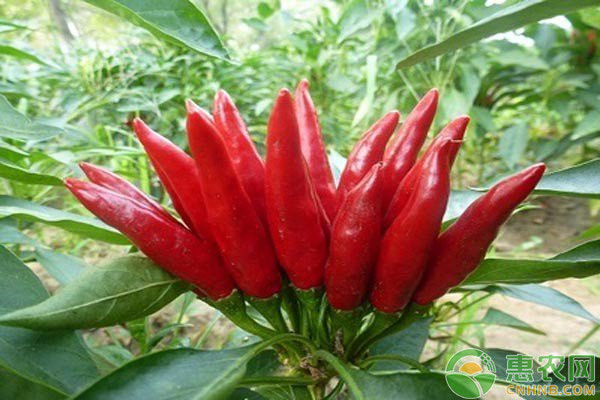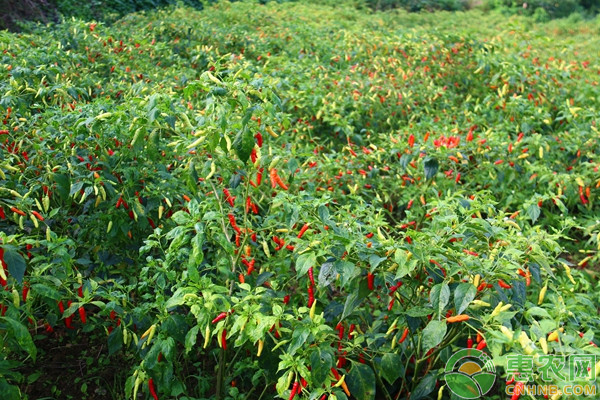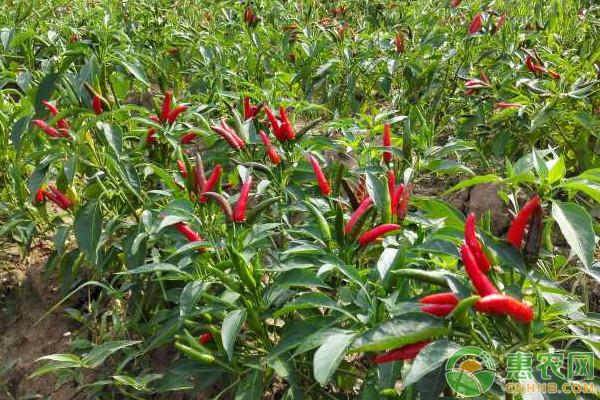How to cultivate winter sorghum peppers in the north? How to choose the varieties of winter scallions? Today, I mainly study the pollution-free cultivation techniques of winter greenhouse peppers in the solar greenhouse in the northern region. You can come to Huinong.com!

1 variety selection
In the solar greenhouse, winter sorghum pepper cultivation needs to choose varieties with good early maturity, strong disease resistance and commercial traits to meet market demand. At present, the variety suitable for cultivation in the solar greenhouse in the Kashgar region of Xinjiang Uygur Autonomous Region is Qijiao No. 2.
2 Land selection
Choose 3 to 5 a without sowing vegetables and fruits, high soil organic matter content, soil fertility above medium, convenient irrigation and drainage of loam and sandy loam, usually choose wheat stubble and corn stubble.
3 seed treatment
The seeds are air-dried for 3 to 5 days, then subjected to warm soup soaking and chemical treatment. Soak the seeds in warm soup, so that the sun-dried seeds are immersed in warm water of 55-60 °C (2 parts of boiling water for 1 part of cold water) for 15 minutes, then stir constantly, so that the water temperature drops to 25 °C, then fish out and wash, then Soak in warm water at 25 ~ 30 °C for 20 ~ 24 h.
4 pepper seedlings
Winter and spring are the most important pass. Seeds that have been germinated in advance can be emerged 5 to 6 days after sowing. Sowing from late July to early August, the seedling age is about 40 days, and colonization is carried out in mid-September.
4.1 Nutritional seedlings
First, prepare the nutrient soil of the pepper. Mix 1 part of sheep dung in the next year, 3 parts of rehmannia sandy loam and 1 part of sieved ash or grass ash. The depth of the nutrient-filled soil is 2/3 of the height of the nursery, and then the bottom water is poured. Secondly, soak seeds with 10% trisodium phosphate for 20-30 min before sowing, or soak them with 1% potassium permanganate solution for 30 min, then wash them with water, soak them in a cool place and soak them. In addition, the seeds were immersed in warm water at 50-55 ° C for 10 min, stirring was continued until the temperature dropped to 30 ° C, and then soaking for 8 h at room temperature. After soaking seeds, the seeds are dried and germinated under the greenhouse.
4.2 seedbed seedlings
The best sowing date for the late-season and late-season peppers in the greenhouse is mid-to-late July, often using cross-cut on-demand, one or two seeds per spot. The foot water is poured two or three days before the seedling is planted, and the soil is covered with 0.5 to 1.0 cm in time, and then a layer of fine soil mixed with the sterilizing agent is thinly spread.

4.3 Seedling management
4.3.1 Temperature Management
After sowing, the daytime temperature is controlled at 25 to 28 °C, and the nighttime temperature is controlled at 15 to 20 °C.
4.3.2 Humidity Management
Ensuring the water supply of seedlings is the key to cultivating strong seedlings. Excessive moisture, high temperature, easy to appear long; humidity, low temperature, there will be seedling diseases, such as rotten roots.
5 colonization
5.1 Soil treatment
Soil treatment before planting, 3,000 to 4 000 kg of decomposed high-quality farmyard manure, 100 kg of bio-organic fertilizer, 30 kg of diammonium phosphate and 10 kg of potassium sulfate (mixed evenly) per 667 m2, deep tillage and flattening.
5.2 ridge
It is ridged at a width of 150 cm from north to south, with a ridge width of 100 cm, a ridge width of 80 cm, a ridge height of 10 to 15 cm, and a working groove width of 50 cm.
5.3 transplanting
When the pepper seedlings are generally 35 to 40 days old and have 6 to 8 true leaves, they can be transplanted. The row spacing of transplanted plants was 20-25 cm, and 667 m2 retained 5 500 basic seedlings. After the planting, the temperature of the greenhouse was stable and timely watering. After 4-7 days, the seedling water was poured again. After 7 days, the pepper seedlings resumed growth, and the survival rate of colonization was over 95%.
6 Field management
6.1 Adjustment of light, temperature and humidity
After transplanting, appropriate shading should be carried out. The length of the covering time is determined by the intensity of the light at that time, and the light is given for 6-8 hours per day. The temperature is controlled at 25-30 °C during the daytime and 15-20 °C at night. The relative humidity control is controlled. In 60% to 70%. After the transplanting, the seedling water was poured in time and the water volume was about 10 cm.
6.2 Fertilizer and water management
In the seedling stage, the roots of the peppers are small, and they are afraid of drought and drought, and the requirements for soil moisture are strict. It is best to install the drip irrigation belt to control the disease and increase the ground temperature. The drip irrigation belt is laid flat on the roots of the two ridge plants, and the mulch is buckled after planting.
In the seedling stage, the water is poured in the seedling stage, and the watering is controlled during the flowering and fruiting period. Generally, the water is fertilized from the growth of the door pepper, and the watering is applied once every 10 to 15 days. The water is applied with 40% potassium sulfate 5-8 kg and diammonium phosphate with water 667 m2. 10 to 15 kg, while spraying potassium dihydrogen phosphate once every 7 days. During the harvesting period, the fertilizer is applied once every 15 to 20 days, and water is poured every 8 to 10 days. In the winter, as the weather gets colder, the number of fertilization and watering is reduced.
7 Pest Control
Capsicum is a susceptible crop. It has been easy to cause accumulation of pathogens in the soil for many years. Improper management measures and abnormal climate can easily cause disease. Therefore, we must pay attention to the prevention and prevention of greenhouse pepper diseases. The main diseases of peppers include rickets, blight, Phytophthora, viral diseases and powdery mildew. The main pests are aphids, whitefly, golden worms and tigers.
7.1 Agricultural control measures
For the main control objects of local pests and diseases, high-resistance and multi-resistance varieties are selected. Implement a strict rotation system and rotate more than 3 茬 with non-solanaceae crops. Soil testing and formula fertilization, adding fully decomposed organic fertilizer, less fertilizer, to prevent soil eutrophication.
7.2 Physical control measures
In the greenhouse, yellow or yellow membranes are used to trap the winged scorpion and the leaf-spotted fly, and the 667 m2 hangs the yellow sticky worm board 30-40 pieces. The small shed covers the silver-gray mulch to repel the mites. In the summer, in the warm shed leisure period, the film is baked for 5 to 7 days, and the high temperature shack is disinfected.

7.3 Chemical control measures
For example, in the early stage of powdery mildew, it can spray 1 000 times of polyoxygenate + 3 000 times of DuPont Fuxing, and the effect is better. It should be noted that high-toxic and high-residue pesticides are not allowed. For example, inorganic arsenic insecticides, inorganic arsenic fungicides, organic mercury bactericides, organochlorine pesticides, and organophosphates are not allowed in the production of A-grade green vegetables. Insecticides, substituted phosphorus insecticides, organic synthetic plant growth regulators and chemical herbicides.
8 harvesting
Timely harvesting, reducing plant burden, to ensure the quality of commercial fruit, and promote the expansion of fruit in the later period. The tools used in the harvesting process are hygienic and non-polluting, and the packaging materials should be clean, firm, breathable and non-polluting, and have no odor, so that the clean dishes can be marketed.
The above is all the technical content of today, continue to pay attention to Hui Nong.com can also keep abreast of market information and the latest agricultural technology every day!
Wirelless Fire Alarm System,Wireless Fire Sounder,Wireless Fire Detection,Wireless Smoke Detector
LIAONING YINGKOU TIANCHENG FIRE PROTECTION EQUIPMENT CO.,LTD , https://www.tcfiretech.com